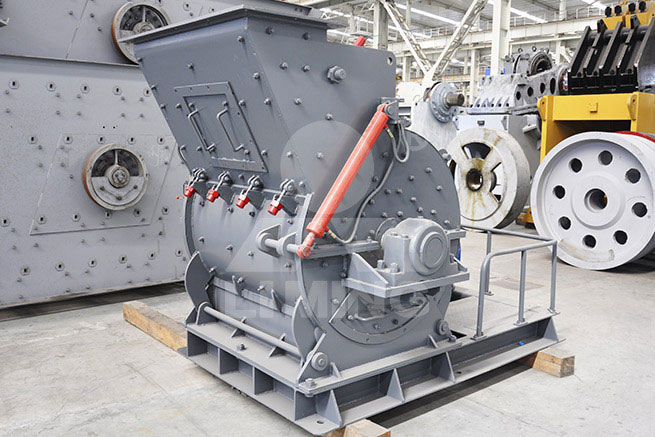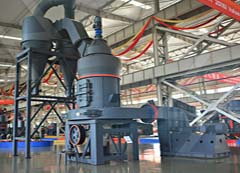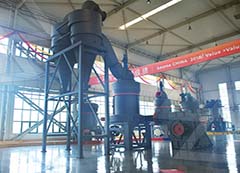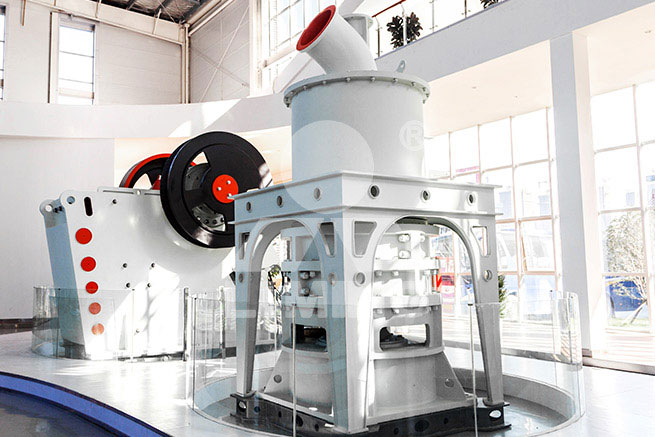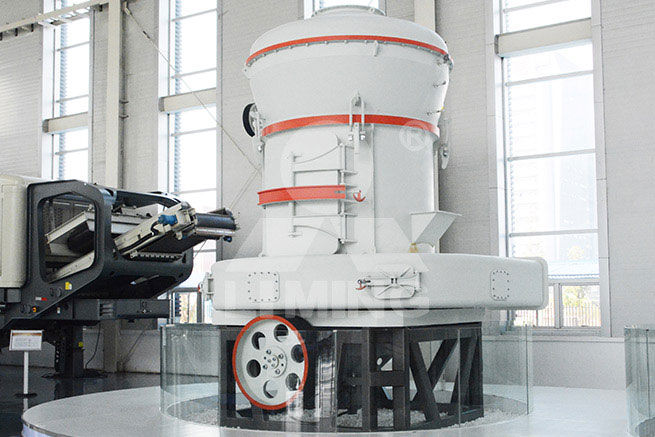arsenic removal plant

This Plant Loves to Soak Up the Highly Toxic Chemical Arsenic
网页2019年5月17日 The Chinese brake fern ( Pteris vittata )—which is indigenous to Asia, southern Europe, tropical Africa and Australia—has a unique ability: It can absorb high
More
Arsenic Removal Technologies A Review - Water Online
网页2015年3月11日 Methods for reducing arsenic concentrations include: Lime precipitation Oxidation Coagulation/filtration Adsorptive media Ion exchange Reverse osmosis Lime precipitation has been used to reduce arsenic
More
Arsenic in Plants: Uptake, Consequences and Remediation
网页Arsenic in Plants Comprehensive resource detailing the chemistry, toxicity and impact of arsenic in plants, and solutions to the problem Arsenic in Plants: Uptake,
More
Arsenic Removal - an overview ScienceDirect Topics
网页The arsenic removal loop consists of two peristaltic pumps for circulation of the cold (distillate) and hot (feed) streams, two rotameters for measurement of these flow rates,
More
Arsenic in Plants: Uptake, Consequences and Remediation
网页The role of phytohormones, mineral nutrients, metabolites and signaling molecules in regulating arsenic-induced toxicity in plants; Genomic, proteomic, metabolomic, ionomic
More
Arsenic Removal Plant - Unicare Technologies Pvt. Ltd.
网页An arsenic removal plant is a facility designed to remove arsenic from water or other liquid streams. Arsenic is a toxic element that can cause serious health problems if
More
An Overview of Arsenic Removal Technologies in
网页A detailed review of arsenic removal technologies is presented by Sorg and Logsdon (1978). Jackel (1994) has documented several advances in arsenic removal
More
The Arsenic Rule: Water Treatment Plant Residuals
网页The Arsenic Rule: Water Treatment Plant Residuals Issues in Management and Disposal • Waste disposal is an important consideration in the treatment selection process. Arsenic
More
Arsenic Removal - Gadgil Lab for Energy Water Research UC
网页The first method is called Arsenic Removal Using Bottom Ash (ARUBA). Bottom ash, a widely available waste material from coal-fired power plants, is coated with iron rust, which binds to arsenic. The arsenic can then be removed from the water through settling and/or filtration. The second method is called ElectroChemical Arsenic Remediation (ECAR).
More
Arsenic Removal from Drinking Water: Experiences with
网页2017年5月5日 b These plants were initially constructed for turbidity removal and later upgraded to remove arsenic. Treatment plants for As removal from drinking water are also in operation or under development in other countries in Latin America, particularly Argentina and Guatemala ( Cortina et al. 2016 ).
More
Arsenic in Plants: Uptake, Consequences and Remediation
网页Arsenic in Plants Comprehensive resource detailing the chemistry, toxicity and impact of arsenic in plants, and solutions to the problem Arsenic in Plants: Uptake, Consequences and Remediation Techniques provides comprehensive coverage of the subject, detailing arsenic in our environment, the usage of arsenicals in crop fields, phytotoxicity of
More
Arsenic Removal - Lenntech
网页The used filter media LennSORB Arsenic Removal which is based on granular ferric hydroxide is a high performance adsorbent. This product is recognized for its high quality and purity, LennSORB Arsenic Removal
More
Arsenic in Plants: Uptake, Consequences and Remediation
网页Comprehensive resource detailing the chemistry, toxicity and impact of arsenic in plants, and solutions to the problem. Arsenic in Plants: Uptake, Consequences and Remediation Techniques provides comprehensive coverage of the subject, detailing arsenic in our environment, the usage of arsenicals in crop fields, phytotoxicity of arsenic and
More
Arsenic Treatment Technologies for Soil, Waste, and Water
网页2023年1月24日 Technologies for water include: precipitation-coprecipitation, membrane filtration, adsorption, ion exchange, permeable reactive barriers, and biological treatment. Two technologies discussed in the report address soils, other solids, and water: electrokinetics and phytoremediation. Arsenic Treatment Technologies for Soil,
More
Comparing Two Operating Configurations in a Full
网页2013年6月21日 Most methods for arsenic removal are effective, including: conventional clarification (coagulation-flocculation-sedimentation-filtration), activated alumina, ionic exchange, adsorption and capacitive
More
Insight of particulate arsenic removal from coal-fired power plants
网页2019年12月1日 Arsenic is easily volatilized as vapors during coal combustion and predominantly transferred into particulate forms. The removal of particulate arsenic together with fine fly ash particles is essential to control
More
Enhancing arsenic removal from arsenic-contaminated water by
网页2018年5月1日 In this study, Echinodorus cordifolius was the best plant for arsenic removal compared to Cyperus alternifolius, Acrostichum aureum and Colocasia esculenta. Under arsenic stress, the combination of E. cordifolius with microbes (Bacillus subtilis and Arthrobacter creatinolyticus) was investigated. It was found that A. creatinolyticus, a
More
Arsenic Removal from Contaminated Soil by
网页remove arsenic from the contaminated soil compared with PE, and it can be more effective with more shallow soil layer. Keywords: Arsenic removal Phytoremediation Phytosuction separation Soil pollution Soil remediation 1 Introduction Phytoremediation is a generic term for remediation technique using plant. Phytore-
More
Bharti Arsenic Removal Plant
网页Bharti Arsenic Removal Plant. Bharti Arsenic Removal Plant is a CSIR, GOI tested and approved treatment plant which works on nano-technology based media. The maximum amount of arsenic in water in India is 1.5 PPM. The permissible limit of arsenic in water is less than 0.01 ppm as per BIS 10500.Iron and Arsenic coexist in ground water.
More
Mining: Production and Control of Arsenic - Society for Mining ...
网页The use of plants, wetlands, and iron nanoparticles to remove arsenic from already contaminated areas is also presently being investigated. The appropriate state of the art and advanced technologies and protocols for monitoring, analyzing, treating and disposing of all types of liquid and solid wastes containing arsenic are available and ...
More
Insight of particulate arsenic removal from coal-fired power plants
网页2019年12月1日 1. Introduction. Arsenic is one of the most volatile and potentially toxic elements to be released from coal-fired power plants. Arsenic is primarily volatilized as As 2 O 3 (g) during high-temperature combustion process [1], [2], more than 80% of which is partitioned into the fly ashes afterward and eventually captured by dust removal device [3].
More
The Arsenic Rule: Water Treatment Plant Residuals - US EPA
网页The Arsenic Rule: Water Treatment Plant Residuals Issues in Management and Disposal • Waste disposal is an important consideration in the treatment selection process. Arsenic removal technologies can produce several different types of liquid and solid wastes, including sludges, brine streams, backwash slurries, and spent media.
More
Arsenic Removal - Gadgil Lab for Energy Water Research UC
网页The first method is called Arsenic Removal Using Bottom Ash (ARUBA). Bottom ash, a widely available waste material from coal-fired power plants, is coated with iron rust, which binds to arsenic. The arsenic can then be removed from the water through settling and/or filtration. The second method is called ElectroChemical Arsenic Remediation (ECAR).
More
Arsenic Removal from Drinking Water: Experiences with
网页2017年5月5日 Treatment of drinking water for arsenic (As) removal has been implemented in centralized facilities worldwide, reflecting the increasingly stringent national and international drinking water standards for As, for which a standard of 10 μg/Lhas been
More
Arsenic in Plants: Uptake, Consequences and Remediation
网页Arsenic in Plants Comprehensive resource detailing the chemistry, toxicity and impact of arsenic in plants, and solutions to the problem Arsenic in Plants: Uptake, Consequences and Remediation Techniques provides comprehensive coverage of the subject, detailing arsenic in our environment, the usage of arsenicals in crop fields, phytotoxicity of
More
Arsenic in Plants: Uptake, Consequences and Remediation
网页Comprehensive resource detailing the chemistry, toxicity and impact of arsenic in plants, and solutions to the problem. Arsenic in Plants: Uptake, Consequences and Remediation Techniques provides comprehensive coverage of the subject, detailing arsenic in our environment, the usage of arsenicals in crop fields, phytotoxicity of arsenic and
More
Insight of particulate arsenic removal from coal-fired power plants
网页2019年12月1日 1. Introduction. Arsenic is one of the most volatile and potentially toxic elements to be released from coal-fired power plants. Arsenic is primarily volatilized as As 2 O 3 (g) during high-temperature combustion process [1], [2], more than 80% of which is partitioned into the fly ashes afterward and eventually captured by dust removal device [3].
More
Arsenic Treatment Technologies for Soil, Waste, and Water
网页2023年1月24日 The information can be used to help identify and screen treatment technologies that can meet the lower arsenic maximum contaminant level (MCL). The technologies included in the report to address soil and solids are: solidification/stabilization, vitrification, soil washing/acid extraction, pyrometallurgical treatment, and in situ soil
More
Mining: Production and Control of Arsenic - Society for Mining ...
网页Arsenic can also be leached out of some metal ores by cyanide or acid rock drainage but can be captured and removed from wastewater prior to release into the environment. Arsenic is also present in coal used to generate electricity. When coal is burned, ash is produced which contains most of the naturally occurring arsenic.
More
Comparing Two Operating Configurations in a Full
网页2013年6月21日 Most methods for arsenic removal are effective, including: conventional clarification (coagulation-flocculation-sedimentation-filtration), activated alumina, ionic exchange, adsorption and capacitive
More
Enhancing arsenic removal from arsenic-contaminated water by
网页2018年5月1日 In this study, Echinodorus cordifolius was the best plant for arsenic removal compared to Cyperus alternifolius, Acrostichum aureum and Colocasia esculenta. Under arsenic stress, the combination of E. cordifolius with microbes (Bacillus subtilis and Arthrobacter creatinolyticus) was investigated. It was found that A. creatinolyticus, a
More
Arsenic Removal from Contaminated Soil by
网页remove arsenic from the contaminated soil compared with PE, and it can be more effective with more shallow soil layer. Keywords: Arsenic removal Phytoremediation Phytosuction separation Soil pollution Soil remediation 1 Introduction Phytoremediation is a generic term for remediation technique using plant. Phytore-
More
A review on different arsenic removal techniques used for ...
网页Using plants and bacteria to purify tainted water, phytoremediation is a plant-based, environmentally benign method of cleaning up As-contaminated locations. ... Arsenic removal is accomplished, using Permeable Reactive Barrier (EK-PRB) in conjunction with Electrokinetic Technology, which has the action of a chelating agent [Citation 125].
More
Bharti Arsenic Removal Plant
网页Bharti Arsenic Removal Plant is a CSIR, GOI tested and approved treatment plant which works on nano-technology based media. The maximum amount of arsenic in water in India is 1.5 PPM. The permissible limit of arsenic in water is less than 0.01 ppm as per BIS 10500.Iron and Arsenic coexist in ground water.
More
An overview of main arsenic removal technologies
网页2018年10月1日 Arsenic (As) is metalloid, naturally present in the environment but also introduced by human activities. It is toxic and carcinogenic and its exposure to low or high concentrations can be fatal...
More
Bacterial Arsenic Metabolism and Its Role in Arsenic
网页2022年3月15日 Plant-associated some specific arsenic-resistant bacteria can increase 44% arsenic uptake and reduce bioleaching by 71% [ 17 ]. In another study, when P. vittata L. was treated with bacteria, it can increase plants biomass by 45% and arsenic removal potentiality increased from 13 to 35% [ 74 ].
More- << Previous:Open Gold Loan Business
- >> Next:Crusher Machine For Sale Davao Grinding Mill China


